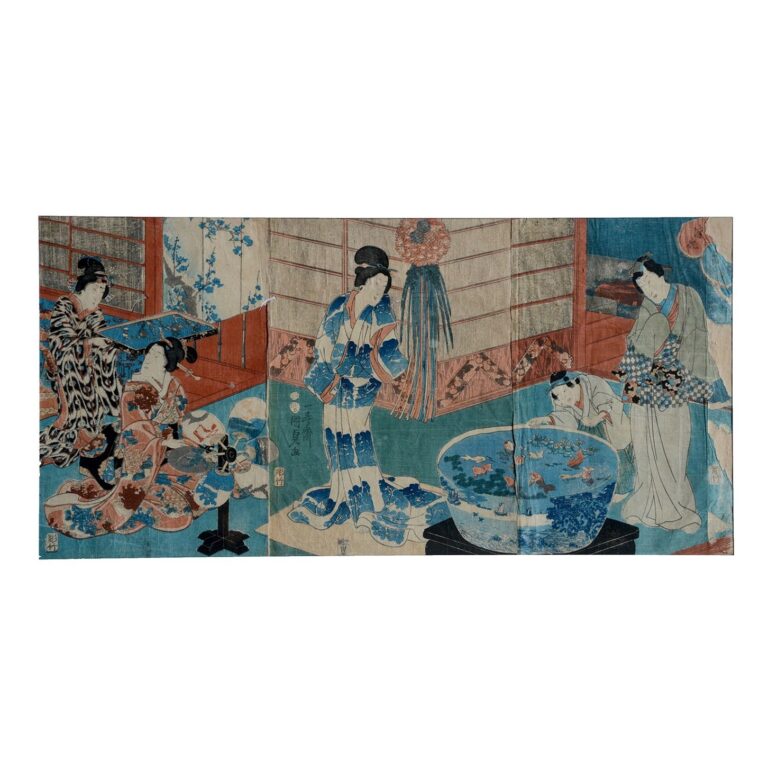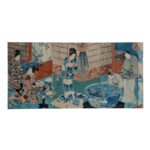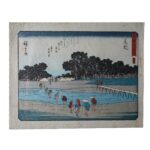Japanese woodblock print or Ukiyo-e Images of the twelve months of modern Genji outdoors: The Five Festivals Represented by Eastern Genji
A print showing a family celebrating the Tanabata festival. This is a love festival on the seventh day of the seventh month according to the lunar calendar, recalling the annual meeting of two lovers – the stars Altair and Vega (in Japanese Hikoboshi 彦星 and Orihime 織姫). The decorative ribbons on the wall are meant to represent the fabric woven by Princess Orihime, the star of Vega. It is a satire on the literary work Village Genji (Inaka Genji 田舎源氏), which is a parody of the famous novel Genji monogatari (Genji monogatari 源氏物語) by Murasaki Shikibu 紫式部. This can be seen from the man wearing a black ornament, like the main character in Village Genji. That this is a scene from this work is also confirmed by the word in the Japanese title of the work, azuma あづま, which has also been used as a synonym for inaka 田舎 meaning east, which was once considered an underdeveloped area.
In the first ... more
A print showing a family celebrating the Tanabata festival. This is a love festival on the seventh day of the seventh month according to the lunar calendar, recalling the annual meeting of two lovers – the stars Altair and Vega (in Japanese Hikoboshi 彦星 and Orihime 織姫). The decorative ribbons on the wall are meant to represent the fabric woven by Princess Orihime, the star of Vega. It is a satire on the literary work Village Genji (Inaka Genji 田舎源氏), which is a parody of the famous novel Genji monogatari (Genji monogatari 源氏物語) by Murasaki Shikibu 紫式部. This can be seen from the man wearing a black ornament, like the main character in Village Genji. That this is a scene from this work is also confirmed by the word in the Japanese title of the work, azuma あづま, which has also been used as a synonym for inaka 田舎 meaning east, which was once considered an underdeveloped area.
In the first part of the triptych, the woman on the left holds a tray with tea accessories. In front of her sits a woman, and in front of her, a stand with fans. In the second and third part of the triptych a woman, a man and a child are depicted watching goldfish in a porcelain bowl. (KH, JR)




































Do you have a comment or additional information about the subject?